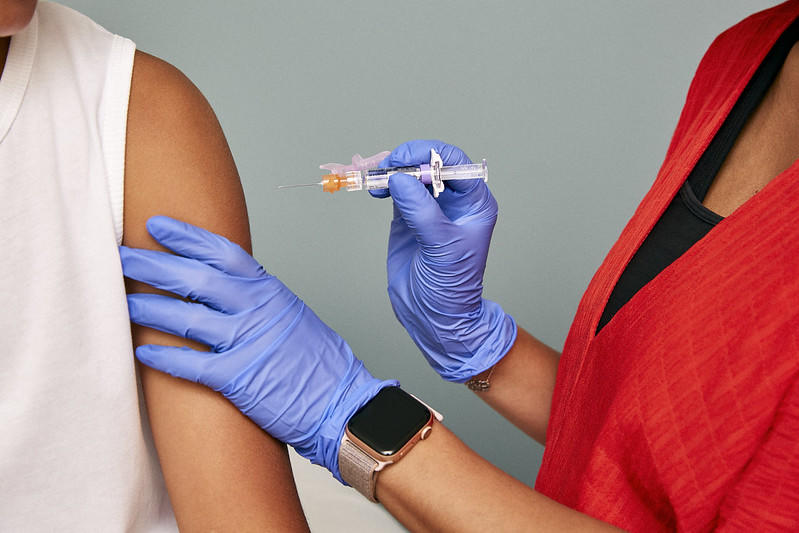Study Suggests HPV Vaccine Would Prevent Most Cervical Cancers/Precancers Across Major U.S. Racial/Ethnic Groups
, by Elise Tookmanian, Ph.D.
A pooled analysis of data on human papillomavirus (HPV) genotypes detected from cervical precancers and cancers in the U.S. showed that across major racial and ethnic groups, at least 84 percent of precancers and at least 90 percent of invasive cancers were attributed to HPV types targeted by the 9-valent vaccine. Among non-Hispanic Black women, a higher proportion of squamous cervical precancers were attributed to non-vaccine types, especially HPV 35. This work was published in the Journal of the National Cancer Institute on February 17, 2022.
Previous studies have suggested that HPV 35 may be responsible for a greater proportion of cervical precancer and cancer among Black women. To explore vaccine efficacy by race or ethnicity in the U.S., investigators from the Biostatistics Branch and Clinical Genetics Branch, led by Julia C. Gage, Ph.D., M.P.H., and the Center for Disease Control and Prevention (CDC) assembled one of the largest pooled studies of HPV genotypes in precancer and cancer cases.
Based on their results, the 9-valent HPV vaccine could prevent nearly all cervical precancers and invasive cancers among major racial and ethnic groups in the U.S. The researchers noted that among non-Hispanic Black women, a higher proportion of squamous cervical precancers were attributed to non-vaccine types (15.8%) compared with other racial and ethnic groups (9.2%-11.3%). Specifically, HPV 35 was more prevalent among non-Hispanic Black women with squamous cervical precancer (9.0% vs. 2.2-3.0% in other groups). Interestingly, HPV 35-associated invasive squamous cervical cancers were much less common with no significant difference between racial and ethnic groups. Due to limited sample size, the researchers were unable to examine the racial and ethnic variation in HPV genotypes for less common adenocarcinoma in situ and invasive adenocarcinomas.
These data showing that HPV 35 was attributed to a greater percentage of squamous precancers for U.S. Black women than other racial and ethnic groups adds to the growing international literature that HPV 35 has potential importance among women of African ancestry. Previous international studies have shown that the proportion of cervical cancers caused by HPV 35 among women in Sub-Saharan Africa is higher than those of countries outside of Africa. This study did not observe a difference in HPV types in invasive cancers by race and ethnicity in the U.S. Importantly, the current HPV tests for HPV-based screening and management in the U.S. target all high-risk types, including HPV 35.
Reference
Mix J, Saraiya M, Hallowell BD, Befano B, Cheung LC, Unger ER, Gagano JW, Markowitz LE, Castle PE, Raine-Bennett T, Walker J, Zuna R, Schiffman M, Wentzensen N, Gage JC. Cervical Precancers and Cancers Attributed to HPV Types by Race and Ethnicity: Implications for Vaccination, Screening, and Management. J Natl Cancer Inst 2022.
